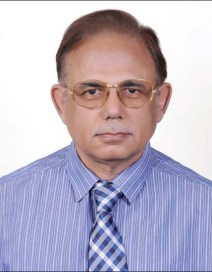Kapil Bakshi Wisconsin CME certificateKapil Bakshi Wisconsin HHPF certificate
List of publications and links
Dr Kapil Bakshi Publications and Reviewership in research in International prime European and American peer reviewed journals with a high Impact Factor
1. http://link.springer.com/article/10.1007/s12570-013-0215-1
European Orthopaedics and Traumatology
June 2014, Volume 5, Issue 2, pp 145-147
Date: 09 Sep 2013
Shoulder dislocation—a modified reduction technique for anterior and inferior dislocations
Official Journal of the European Federation of National Associations of Orthopaedics and Traumatology (EFORT)
Abstract
Introduction
This modified reduction technique reduces trauma and morbidity for anterior and inferior dislocations, is easy to perform, and is reliable.
Method
The procedure uses a “three directional pull” as follows: (1) Linear traction of the affected arm as it lies in the “position on arrival” in the Emergency Room. (2) Counter traction in the opposite direction. (3) The “third force” (a modification) is a sustained, increasing traction with a 2–3 in. broad sling placed around the neck of the humerus, pulling in the direction of 2 o’clock (left shoulder)/10 o’clock (right shoulder) in line with the lateral border of the scapula [runs parallel to the face of the glenoid]. Reduction is generally done under sedation, but general anesthesia used on the elderly and osteoporotics makes the procedure easier, safer, and quicker. Immobilization is in “internal rotation” for 3 weeks.
Result
Reduction is either “spontaneous” or achieved in a maximum of three precisely graded attempts undertaken in quick succession in full “three directional traction mode,” using a much reduced range of abduction and external rotation than that used in Kocher’s technique.
Conclusion
The “third force” is the crucial GUIDING force which helps to unbutton the head of the humerus from the rent in the capsule and/or “glide” the head effectively on to the glenoid. It will counteract or minimize muscle spasm. There was 100 % success in the 30 cases reduced by this technique over a period of 2.5 years
Full text available on hacked websites if googled
2. Open Axial and True Vertical Ankle Dislocation Without Malleolar …
http://www.jfas.org/article/S1067-2516(14)00562-6/abstract
http://www.sciencedirect.com/science/article/pii/S1067251614005626
Open Axial and True Vertical Ankle Dislocation Without Malleolar Fractures: A Case Report
Abstract
Tibiotalar dislocation is rare and usually associated with a high-velocity, high-energy impact or extreme sporting injuries. I describe complete tibiotalar dislocation from an unusual mechanism. A 22-year-old mechanic was sitting under a hydraulic lift when it began to leak, lowering the engine on which he was working onto his right lower thigh. This heavy load, without rotational force or high-velocity impact, was transmitted down his foreleg. Because his foot was fixed to the ground, the talus was proximally and vertically displaced, and the distal tibia was forced to the ground, beside his foot, and was contaminated with sand and grease. The circumferential ligament complexes and capsule were completely transected, but, despite a severely disrupted dorsal and capsular blood supply, talar vasculature remained adequate. In the emergency department, gentle traction restored impaired circulation. No malleolar fractures were seen. The wound was meticulously irrigated with saline and povidone-iodine and debrided. Cefepime, 2 g, was given twice daily. In surgery, the unstable joint was transfixed with two thick Kirschner wires, passed retrograde. Interrupted sutures were placed in the anterior capsule and anterior third of the lateral ligament without additional incisions. The wound healed aseptically. The Kirschner wires were removed at 6 weeks. The joint space was only minimally reduced. He returned to work after 4 months. His ankle-hindfoot score was 90/100 at 18 months, he could jog at 24 months, and he was still asymptomatic at 36 months. The case illustrates the importance of preserving talar circulation and treatment within the “golden hour.”
3. My latest publication
http://journals.lww.com/jorthotrauma/Abstract/publishahead/Humane_Surgical_Positioning__Bakshi_s__during.99186.aspx
Humane Surgical Positioning (Bakshi’s) during Minor Limb Surgeries under Local Anesthesia in Young Children.
Bakshi, Kapil M.S (Master of Surgery); Dr.
Abstract
Summary: Injured children are in pain, anxious, scared and intimidated by the ER environment and parents often compound this anxiety by their own fears. During minor surgical procedures a child held in the ‘humane position’ by the parent is helpful.
The child is positioned in the parent’s lap so that the affected extremity is drawn out and placed on the side of the parent. The surgeon and instruments are positioned behind the parents back out of the child’s and parent’s field of vision especially if the wound is bleeding actively. Physical intimacy with the parent is capitalized upon; this makes the child feel secure, comfortable, relaxed and reassured during the procedure.
Copyright (C) 2015 Wolters Kluwer Health, Inc. All rights reserved.
4. http://www.bitlifesciences.com/wcort2014/program-se2.asp
Title: Concealed Trabecular and Stress Fractures including Epiphyseal-Physeal and Chondral Injuries – Reliability of Therapeutic Ultrasound and Tuning Fork Diagnostic Modality – Can We Ignore the Basics
Dr. Kapil Bakshi, Specialist Orthopaedic Surgeon, Khorfakkan Hospital, United Arab Emirates
Presentation of research in
Segment 2: Best Practice of Orthopaedics
Forum 2-3: Sport Medicine and Clinical Practice
Abstract Published in U.S. Chinese International Journal of Traumatology.
Page 119, Volume 13 Number 3 General No. 42 September 2014. ISSN 1538-814X 09
A source journal of the Chinese core periodical database, Chinese scientific and technical periodical database, Chinese medical current contents.
Phase 2 and 3 of the study in progress
5. ‘Road to Zero Infection- Protocol for Acute Traumatic Contaminated Wounds Using Povidone-Iodine Antisepsis’ a study initiated in 2002, manuscript preparation in progress.
Reviewer of Research of 2 International journals
1. BioMed Central – BMC Musculoskeletal Disorders
All articles published in BMC Musculoskeletal Disorders are included in PubMed, the most widely used biomedical bibliographic database service, which is run by the US National Library of Medicine. Other bibliographic databases that index articles published in BMC Musculoskeletal Disorders
2. Editorial Team Member International Journal of Orthopaedics
http://www.ghrnet.org/index.php/ijo/about/editorialTeamBio/14288
International Journal of Orthopaedics
International Journal of Orthopaedics (print ISSN 2311-5106, online ISSN 2313-1462) is a bimonthly, open accessed, peer reviewed journal. The journal seeks to publish original clinical practice and research in the extensive field of orthopaedics, traumatology and arthroscopy.
